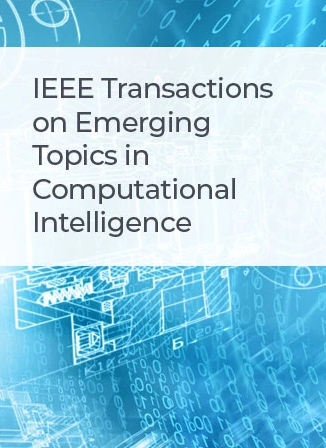AutoOpt:一种自动设计不同结构元启发式优化算法的通用框架
IF 5.3
3区 计算机科学
Q1 COMPUTER SCIENCE, ARTIFICIAL INTELLIGENCE
IEEE Transactions on Emerging Topics in Computational Intelligence
Pub Date : 2025-04-28
DOI:10.1109/TETCI.2025.3561629
引用次数: 0
摘要
元启发式是一种被广泛认可的无梯度求解方法,用于解决不符合传统求解方法的严格数学假设的难题。元启发式算法的自动化设计提供了一条有吸引力的途径,可以减轻人工设计的工作量,并获得比人工算法更好的性能。然而,当前自动化设计管道中特定的算法原型和线性算法表示将设计限制在固定的算法结构中,这阻碍了发现跨元启发式家族的新颖性和多样性。为了解决这一挑战,本文提出了一个通用框架AutoOpt,用于自动设计具有不同结构的元启发式算法。AutoOpt包含三个创新:(i)一个通用的算法原型,致力于尽可能广泛地覆盖元启发式家族。它通过充分发现整个家庭的潜力和新奇之处,促进针对不同问题的高质量自动化设计。(ii)拟合所提原型的有向无环图算法表示。它的灵活性和可进化性使其能够在一次设计中发现各种算法结构,从而提高了发现高性能算法的可能性。(iii)图形表示嵌入方法,提供要操作的图形的另一种紧凑形式,从而确保AutoOpt的通用性。数值函数实验和实际应用验证了AutoOpt的有效性和实用性。本文章由计算机程序翻译,如有差异,请以英文原文为准。
AutoOpt: A General Framework for Automatically Designing Metaheuristic Optimization Algorithms With Diverse Structures
Metaheuristics are widely recognized gradient-free solvers to hard problems that do not meet the rigorous mathematical assumptions of conventional solvers. The automated design of metaheuristic algorithms provides an attractive path to relieve manual design effort and gain enhanced performance beyond human-made algorithms. However, the specific algorithm prototype and linear algorithm representation in the current automated design pipeline restrict the design within a fixed algorithm structure, which hinders discovering novelties and diversity across the metaheuristic family. To address this challenge, this paper proposes a general framework, AutoOpt, for automatically designing metaheuristic algorithms with diverse structures. AutoOpt contains three innovations: (i) A general algorithm prototype dedicated to covering the metaheuristic family as widely as possible. It promotes high-quality automated design on different problems by fully discovering potentials and novelties across the family. (ii) A directed acyclic graph algorithm representation to fit the proposed prototype. Its flexibility and evolvability enable discovering various algorithm structures in a single run of design, thus boosting the possibility of finding high-performance algorithms. (iii) A graph representation embedding method offering an alternative compact form of the graph to be manipulated, which ensures AutoOpt's generality. Experiments on numeral functions and real applications validate AutoOpt's efficiency and practicability.
求助全文
通过发布文献求助,成功后即可免费获取论文全文。
去求助
来源期刊

IEEE Transactions on Emerging Topics in Computational Intelligence
Mathematics-Control and Optimization
CiteScore
10.30
自引率
7.50%
发文量
147
期刊介绍:
The IEEE Transactions on Emerging Topics in Computational Intelligence (TETCI) publishes original articles on emerging aspects of computational intelligence, including theory, applications, and surveys.
TETCI is an electronics only publication. TETCI publishes six issues per year.
Authors are encouraged to submit manuscripts in any emerging topic in computational intelligence, especially nature-inspired computing topics not covered by other IEEE Computational Intelligence Society journals. A few such illustrative examples are glial cell networks, computational neuroscience, Brain Computer Interface, ambient intelligence, non-fuzzy computing with words, artificial life, cultural learning, artificial endocrine networks, social reasoning, artificial hormone networks, computational intelligence for the IoT and Smart-X technologies.
 求助内容:
求助内容: 应助结果提醒方式:
应助结果提醒方式:


